CONNECT SAN FRANCISCO
Dr. Yasantha Rajakarunanayake
Exploring the untold potential of technology
AI has the potential to empower individuals globally, making expert level guidance accessible and driving progress in ways we could once only imagine
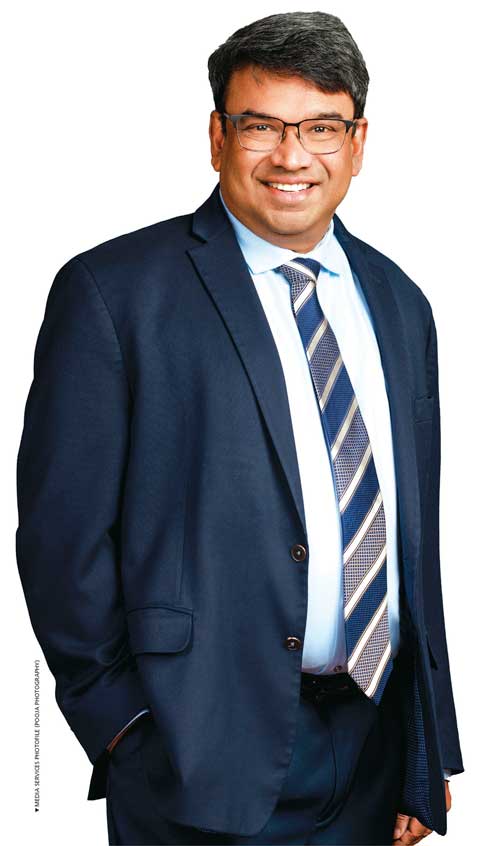
A seasoned technologist and innovator with over 130 patents, Dr. Yasantha Rajakarunanayake is a prominent Sri Lankan engineer and researcher. He was once described as “the smartest guy at Princeton,” by Amazon founder Jeff Bezos.
Born and raised in Sri Lanka, Rajakarunanayake excelled in maths during his time at Royal College and earned a scholarship to Princeton University. He pursued advanced degrees in electrical engineering and computer science, and earned a PhD in applied physics.
Driven by a commitment to seeking impactful and practical solutions that improve lives and pushing the boundaries of technology, Rajakarunanayake has dedicated his career to pioneering advancements in wireless communication, AI and hardware systems.
Additionally, he has held leadership roles in companies such as Broadcom and MediaTek, which has enabled him mentor young engineers and contribute to breakthrough innovations – particularly in WiFi and energy efficient AI.
He remains connected to his Sri Lankan heritage, supporting local tech initiatives, and championing sustainable development to foster a brighter and more connected future.
In this exclusive interview with LMD International, Rajakarunanayake discusses the potential of advancements in AI and large language models (LLMs) driving sustainability and sector developments, and shares his views on Sri Lanka’s future.
– Compiled by Nicola Jayasundera
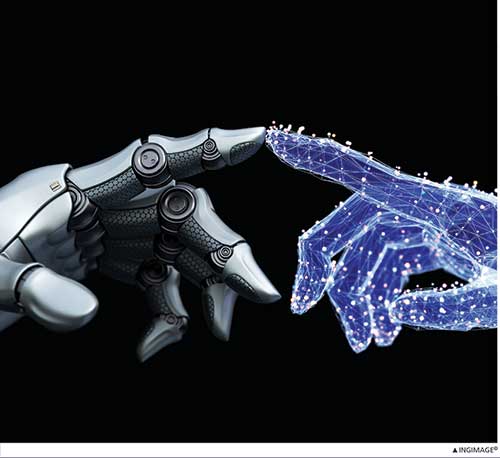
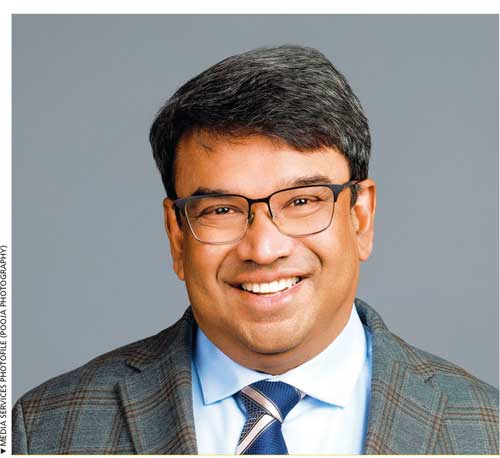
The drive to contribute something impactful to humanity through technology continues to inspire me
Q: Your time at Princeton is often associated with helping Jeff Bezos solve a mathematical problem. How did this academic collaboration influence your thinking about technology?
A: My time at Princeton – especially moments like helping Bezos solve a challenging mathematical problem – was a defining experience that highlighted the value of collaboration, curiosity and intellectual challenge.
Solving the problem that Bezos and his friends struggled with reinforced for me that knowledge is something we build together in often surprising ways. Always teach another what you’ve learned yourself to reinforce your own understanding while helping a colleague. It will go a long way!
Working alongside brilliant minds shifted my perspective on technology from an academic focus to one with broader practical implications. Seeing Bezos later pivot to create Amazon reminds me of how ideas born in academia can transform industries and impact millions.
This experience instilled in me a commitment to pursuing technological solutions that are both innovative and practical, knowing that breakthroughs can inspire others in unexpected ways.
It’s a philosophy I’ve carried throughout my career, from developing WiFi protocols to advancing AI, always recognising that change often starts in moments of collaboration.
Q: And what were your early impressions of Bezos as a classmate?
A: My first impressions of Bezos at Princeton were of someone who is incredibly smart, focussed and tenacious.
He had a rare mix of drive and openness to collaboration. When he faced a challenge, he’d seek help without arrogance – a quality that I found impressive; and combined with hard work, this undoubtedly contributed to his success.
Bezos was a good friend, showing genuine kindness and gratitude. Even now, he often speaks about my humility – a gesture he doesn’t need to make given his success; yet, he chooses to acknowledge others’ contributions along his journey.
This humility and generosity in giving credit reflect his true character. It’s a powerful lesson: acknowledging others only enriches our achievements. His success is well deserved, not only for his intelligence and ambition but for his genuine generous spirit.
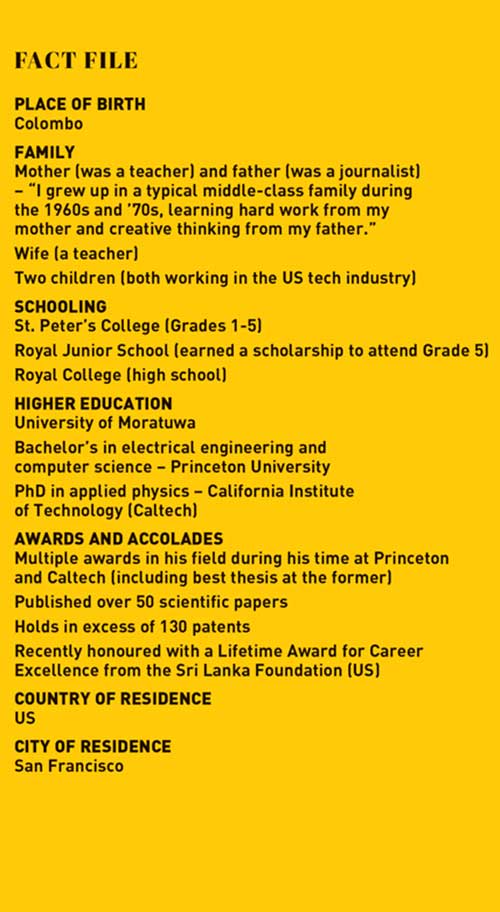
Q: What inspired you to pursue mathematics and technology at such an early stage in life?
A: My fascination with maths and science began early, driven by both circumstance and curiosity. Growing up with severe asthma, I spent many sleepless nights in the 1970s without inhalers in Sri Lanka.
To pass the time, I’d read complex science and maths books borrowed from the British Council library. This habit of exploring advanced materials beyond my grade level strengthened my focus and problem solving skills, building a foundation in mathematics and science.
In primary school, I won a book on 10 pioneering scientists – Archimedes, Galileo, Newton and Einstein among them – whose contributions inspired me deeply. I saw the modern world as shaped by a handful of brilliant minds and this sparked my passion for technology as a force for change, even though ‘technology’ then focussed on agriculture and industry in Sri Lanka.
Today, in a post-industrial world of software, hardware and AI innovation, I feel fortunate that my early love for maths and science fuelled a meaningful career in these revolutions.
The drive to contribute something impactful to humanity through technology continues to inspire me.
Success isn’t a straight line but a winding journey shaped by resilience, adaptability and a willingness to embrace change

Q: In the context of highlights, how has your journey from Sri Lanka to becoming a mathematician and technologist at Princeton University been?
A: My journey from Sri Lanka to Princeton was inspired by an admiration for Albert Einstein, whose legacy fuelled my dream of attending the university where he once worked.
Having gained four As at the A-Level exam and securing one of the highest scores in Sri Lanka, I was fortunate to earn a scholarship to Princeton – my dream university. It was there I met Jeff Bezos, marking the beginning of a journey filled with unexpected turns and lifelong friendships.
My path has been a blend of hard work, luck and seizing opportunities. Success, I’ve found, often depends on being ready to embrace what comes your way.
Over the years, I’ve reinvented myself, moving from physicist and electrical engineer, to professor and finally, technologist. These transitions have enabled me to contribute to diverse fields, each with unique challenges and rewards.
I’ve been privileged to work in areas like software, high-speed internet via cable and DSL, and most notably WiFi communications – a field where my work has left a lasting impact.
Over the last decade, my focus shifted to artificial intelligence – particularly in developing energy efficient hardware to reduce the power demands of large language models (LLMs), making AI more sustainable.
Reflecting on this journey, I’m grateful for the chance to explore multiple domains within technology. This path has taught me that success isn’t a straight line but a winding journey shaped by resilience, adaptability and a willingness to embrace change.
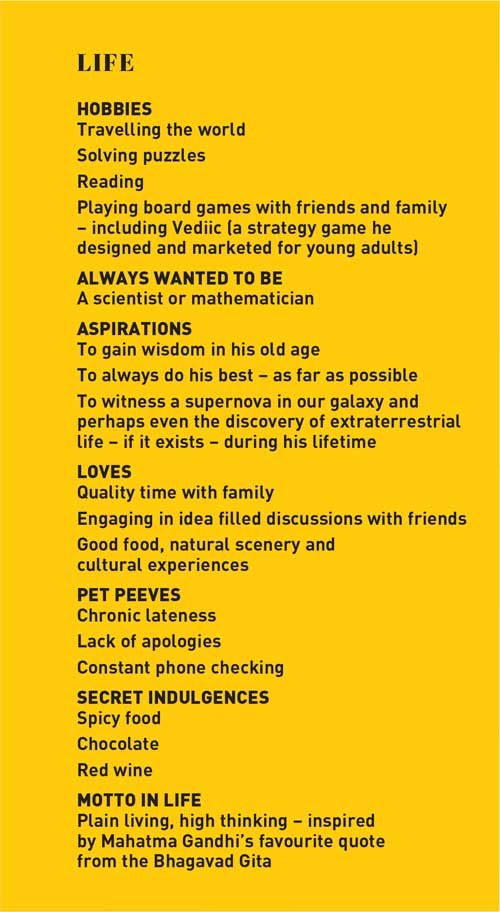
Q: What inspired your work in integrating AI models with noise prone analogue hardware – and how do you envision this transforming industries?
A: AI’s potential to reshape our world is immense with projections suggesting it could contribute 25 percent of global GDP by the next decade.
As AI models grow in complexity however, so does their power consumption. To tackle this, I turned to an often overlooked technology – analogue electronics. Unlike digital systems limited to zeroes and ones, analogue operates on a continuum, much like natural processes.
Our brains are an example of analogue efficiency, operating on only 15 watts, whereas an equivalent digital system would need tens of megawatts. Inspired by this, I began exploring analogue circuitry, using simple physical laws like Ohm’s law for high efficiency, parallel computation with minimal energy.
The challenge is analogue’s inherent noise and uncertainty but I’m developing algorithms to make these computations as reliable as digital with prototypes now achieving about 100 times greater power efficiency.
Looking ahead, this analogue-digital hybrid approach could make AI greener and more sustainable, transforming power limited applications from mobile devices to healthcare. By lowering artificial intelligence’s energy demands, we’re advancing towards an accessible eco-friendly AI future.
Fostering groundbreaking innovation requires curiosity, hard work and a focus on testable, causal hypotheses that provide a competitive edge
Q: Could you explain the importance of developing advanced techniques in numerics and refined model accuracy for complex applications?
A: Numerics is a critical field in advancing AI, as we’re shifting to models that require less computational precision to handle vast data efficiently. Early AI models relied on high precision arithmetic (32-bit) but today, effective results are possible with much lower precision – often eight, four or even two to three bits for LLMs due to the nature of the data.
Consider an image analysis task: low information areas like the sky can use low resolution without losing detail while high information areas like faces or textures need higher precision.
Advanced numerical techniques allocate resources dynamically, prioritising high precision for critical details. This approach reduces computation and optimises energy, essential for deploying large-scale AI models sustainably.
In AI, attention mechanisms complement this approach especially in LLMs, enabling models to focus high resolution computation on relevant data while using lower precision for less critical sections. This tailored precision makes processing more efficient, directing resources to essential parts and minimising energy use.
Together, refined numerics and attention mechanisms make AI models more adaptable, scalable and energy efficient. This synergy is foundational as artificial intelligence integrates more deeply across industries, from mobile devices to cloud systems, paving the way for sustainable high-performance AI solutions in daily life.
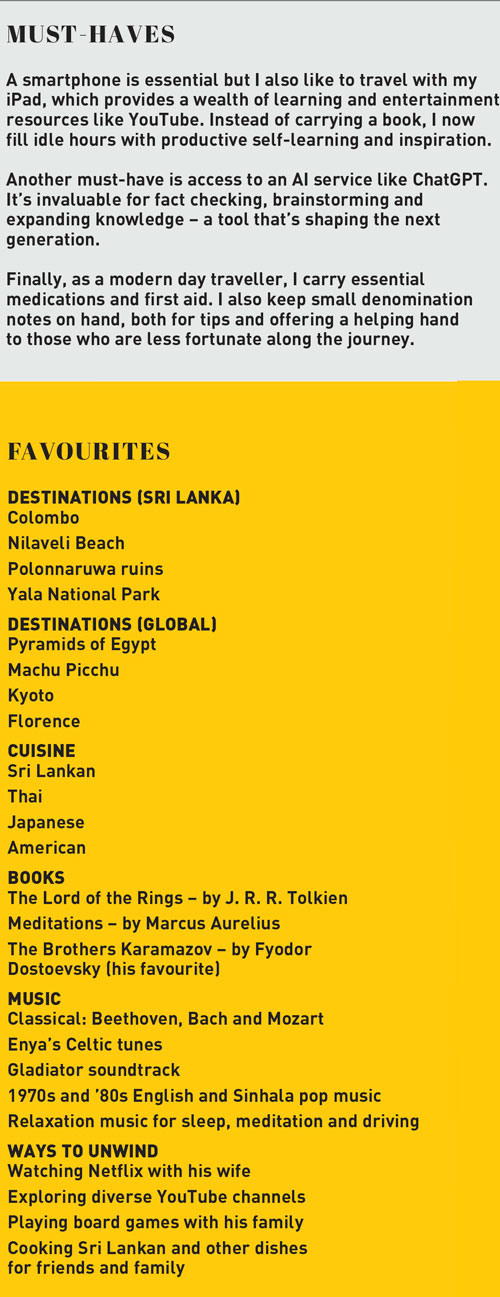
Q: Having held leadership positions at companies like Broadcom and MediaTek, how did you steer your teams towards groundbreaking innovations?
A: In my roles at Broadcom, MediaTek and other companies, I learned that fostering groundbreaking innovation requires curiosity, hard work and a focus on testable, causal hypotheses that provide a competitive edge.
I encourage teams to be first in novel areas – in fields like AI where best practices are still emerging, it’s essential to invest time in finding optimal solutions that bring scalability and solve complex problems.
Moreover, I emphasise purpose built solutions. While GPUs are versatile, custom hardware and software can deliver significant gains in speed, efficiency and precision for specific tasks. This approach, combined with strategic best practices, often results in innovations and valuable patents that provide long-term advantages.
Ultimately, I aim to build a culture where curiosity, unique problem solving and dedication to excellence drive meaningful breakthroughs.
Q: Your present focus includes reducing power consumption in AI technologies. How do you balance the need for high performance computing with the growing concerns around sustainability?
A: Balancing high performance AI computing with sustainability is a critical challenge but advancements in intelligent design and energy sources are making it more achievable.
One strategy is the selective use of computational power in LLMs – attention mechanisms direct resources to only relevant data, much like the brain’s focus on essential information. Additionally, since AI inference is often probabilistic, lower precision calculations can further reduce power demands.
Major cloud providers in the US are investing in clean energy sources like solar and nuclear, with leaders like Bezos and Bill Gates actively pursuing sustainable initiatives. This shift from fossil fuels is crucial to supporting AI growth with minimal environmental impact.
On the hardware side, analogue computing shows promise by performing parallel computations at lower power, which is ideal for handling large LLMs.
While some LLMs are expanding, R&D is also focussing on smaller fine-tuned models under a gigabyte for commercial and specialised applications, easing the energy load for these tailored systems.
Looking ahead, AI may play a pivotal role in building a sustainable future, aiding complex tasks like plasma stabilisation in nuclear fusion research. Achieving fusion would offer abundant CO2 free energy from seawater, highlighting AI not simply as a sustainable technology but an active contributor to a cleaner future.

Q: You’ve worked on AI applications in areas like medical imaging and human speech recognition. What excites you the most about these fields – and how do you see AI reshaping them in the near future?
A: What excites me most about AI in fields like medical imaging and speech recognition is its potential to revolutionise expert driven domains that rely on human knowledge, experience and pattern recognition.
Just as industrial automation took on physical labour, artificial knowledge is set to transform ‘knowledge work’ in roles like medicine, finance and research, where expertise and complex decision making are essential.
By encoding this expertise into AI models, we can dramatically improve productivity, accuracy and accessibility in these fields.
In medical diagnosis for example, doctors use a mix of logic, experience and ‘fuzzy logic’ to interpret symptoms – something AI can emulate and enhance by processing vast datasets and multi-step reasoning. This brings us closer to the idea of expert level AI that can deliver insights with unmatched speed and precision… even on a smartphone.
Imagine a universal medical assistant – much like Google Maps for human knowledge – where AI could one day map the entirety of medical expertise, guiding decisions with accuracy that matches or surpasses specialised professionals.
The more focussed the domain, the more precisely AI can mimic and assist within it.
Being part of this transformation is thrilling, as it promises to democratise access to expert knowledge, making advanced insights in healthcare, finance and research available universally. AI has the potential to empower individuals globally, making expert level guidance accessible and driving progress in ways we could once only imagine.
Imagine a universal medical assistant – much like Google Maps for human knowledge – where AI could one day map the entirety of medical expertise

Q: What drives your passion for continuous innovation?
A: My drive for continuous innovation stems from a lifelong desire to make a meaningful impact – which I believe is central to a fulfilling life. To truly contribute, it’s essential to understand yourself, recognise your strengths and use them fully.
Just as Jeff Bezos found he was better suited to business than theoretical physics, I realised my strength lies in applying mathematical principles to technology and innovation. When you align with what you’re naturally good at, it becomes a source of endless engagement – and ideally, your profession.
Optimisation is a cornerstone of engineering and I’m motivated by the challenge of constantly finding better solutions. Many limitations in technology are perceived rather than absolute – be it in systems, software or hardware. By thinking boldly, we can transcend these perceived limits, constrained only by the laws of physics.
This mindset of expanding possibilities opens the door to innovations that drive societal progress.
Innovation is about standing on the shoulders of giants, as Newton put it. By building on the discoveries of those before us and refining our methods, we can create advancements that genuinely benefit humanity. This commitment to evolving, optimising and innovating keeps my passion alive and fuels my work.
Q: How do you envision the role of AI and technology in advancing sectors here in Sri Lanka – for instance, agriculture, healthcare and education?
A: AI and technology hold immense promise for Sri Lanka as we enter the Fourth Industrial Revolution, driven by AI. Like the steam engine, electricity and the internet before it, artificial intelligence is poised to reshape societies.
Sri Lanka – with its intelligent and youthful population – is well positioned to embrace these advancements, and leapfrog traditional approaches in agriculture, healthcare and education.
In healthcare, AI could modernise traditional practices.
By analysing Ayurvedic herbs, AI can help catalogue and refine treatments for diseases like cancer, combining traditional knowledge with data analysis to create evidence based remedies. Widely available mobile technology could even enable affordable, AI driven diagnostics for remote areas.
And in agriculture, AI can guide farmers on crop rotation, water management and resource efficiency.
By analysing weather patterns and soil conditions, artificial intelligence can optimise yields and sustainability. Additionally, AI can enhance supply chains, helping farmers make informed decisions on when and where to sell, reducing waste and increasing profitability.
Education is a natural fit for artificial intelligence with profound potential to personalise learning.
AI powered tutoring can tailor education to each child’s pace, strengths and needs, regardless of socioeconomic background. Artificial intelligence can identify students’ talents and guide them toward suitable paths, reducing dependence on expensive private tuition and creating a level playing field for all.
Overall, I envision a bright future for Sri Lanka with AI, empowering local sectors to advance sustainably, improving the quality of life and building a resilient economy.
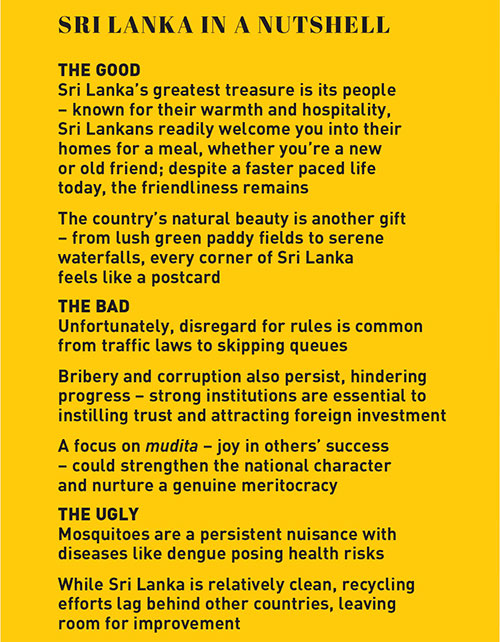
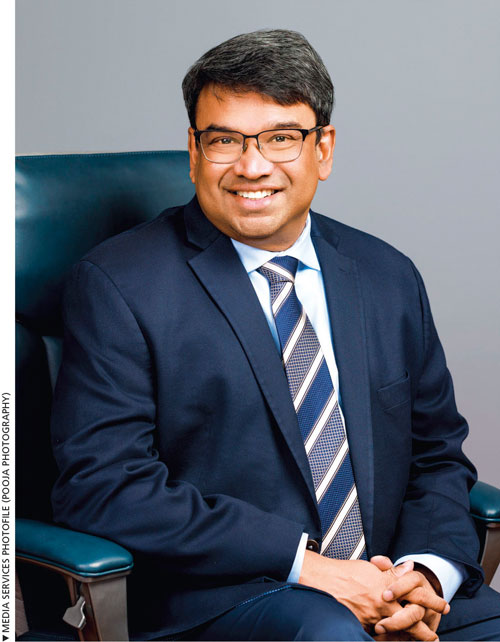
Q: And last but not least, how do you view Sri Lanka today?
A: One area I feel strongly about is the importance of focussing on a coherent vision for the future. Corruption is often singled out as the main issue but I believe that this view can become an intellectual crutch and oversimplifies the problem.
Yes, inefficiencies exist – just as they do in other systems like a car engine where only 15 percent of energy is effectively used – yet, these don’t necessarily prevent progress.
What truly matters is having a meaningful goal and tangible plan, which can drive economic and social benefits. A society can still progress with some waste if it has clear direction and purpose.
To the Sri Lankan tech community, I’d say let’s focus on creating functional and resilient systems even in an imperfect world. Your ideas, if advantageous and viable, will not only succeed but also inspire and create further opportunities – not only for Sri Lanka but the entire world.
Let’s march forward with a practical vision for progress rather than getting bogged down by flaws in the current system.
I’m optimistic about Sri Lanka’s future. With a focus on trust, collaboration and long-term social development, I believe that Sri Lanka can build a society where everyone has the potential to flourish.
I wish our motherland every blessing for a prosperous future – one that is built on faith in each other and dedication to a shared vision of success.
